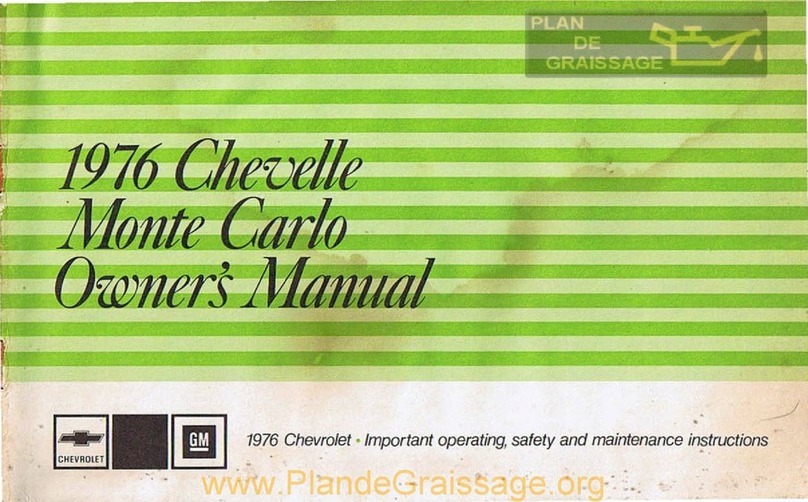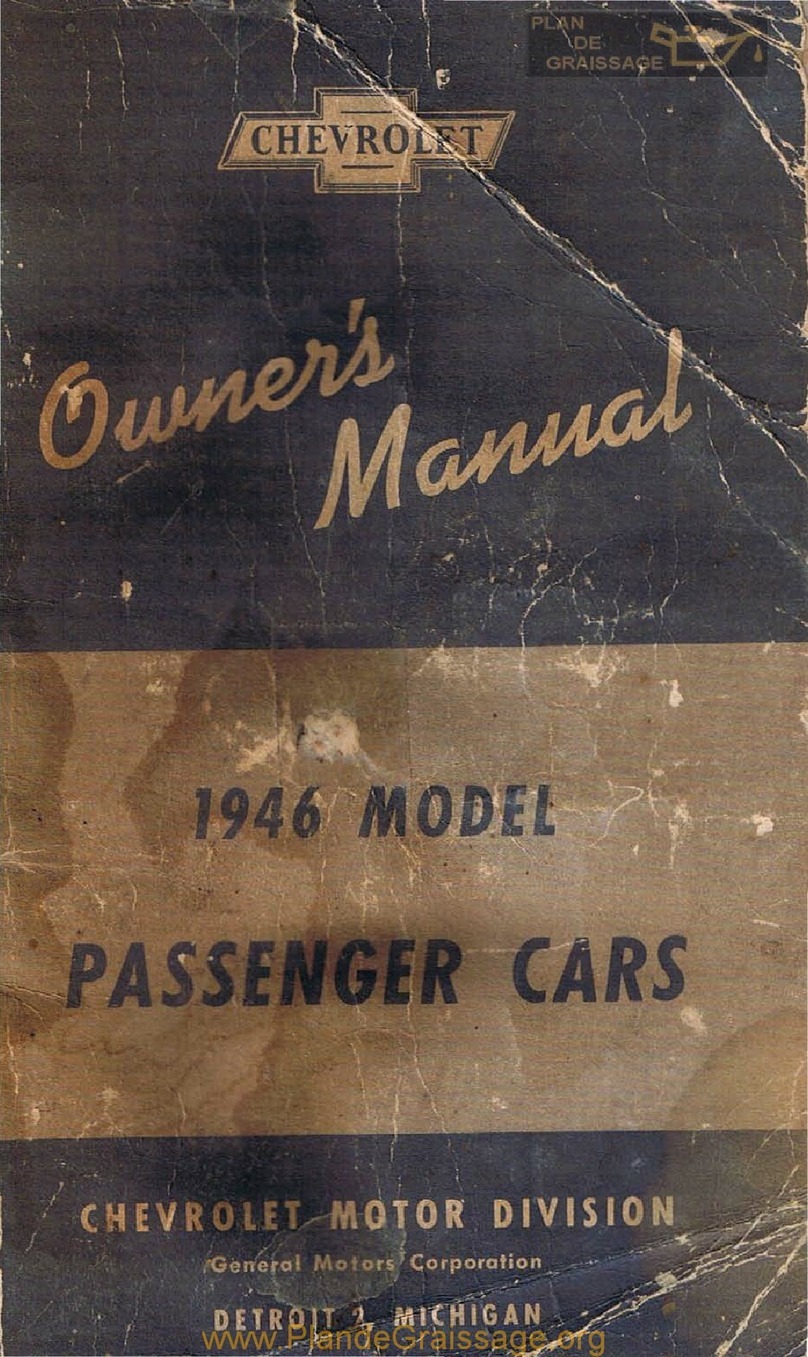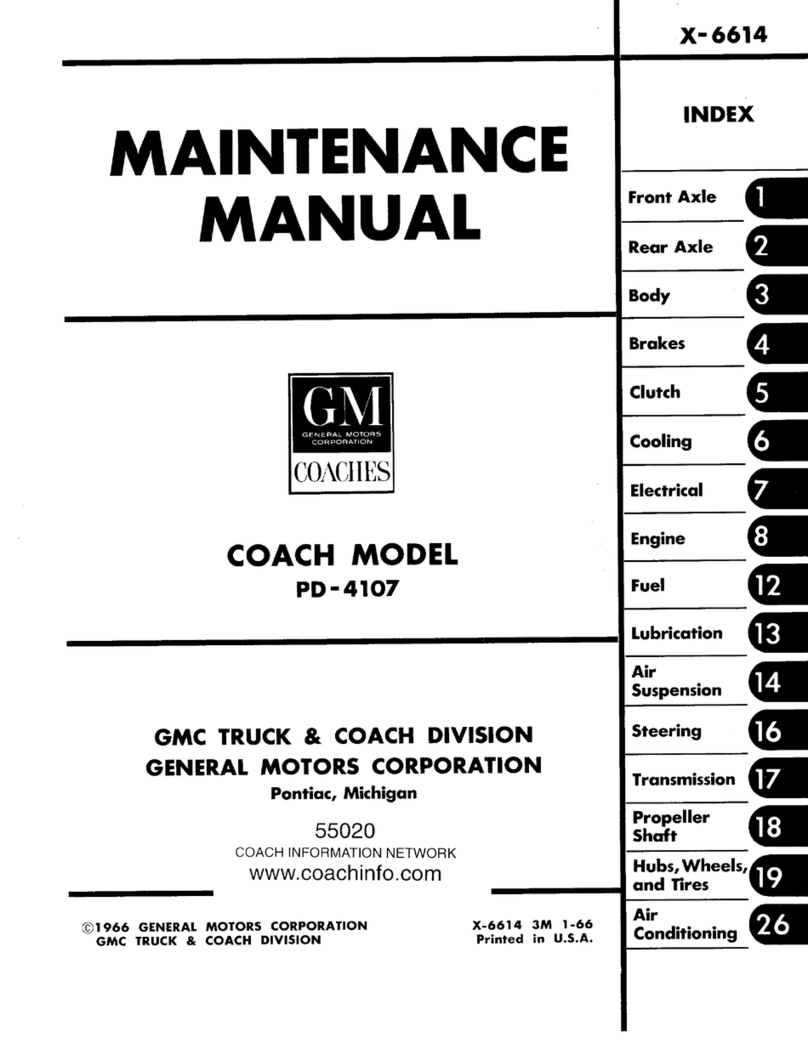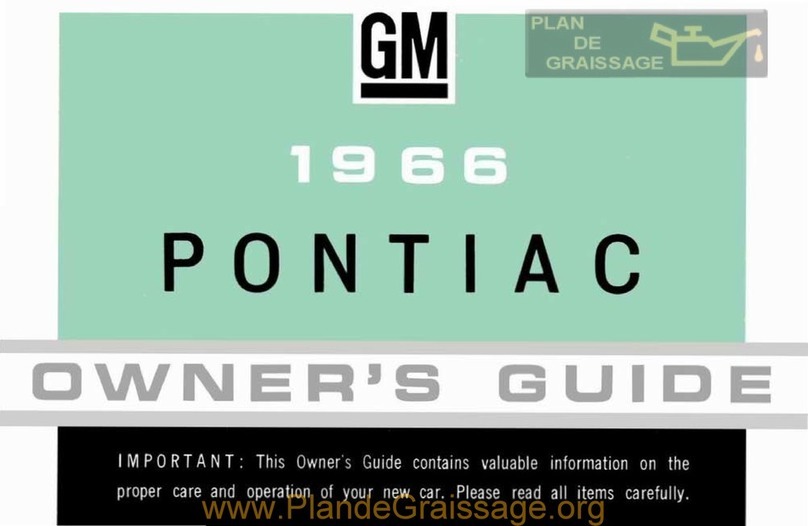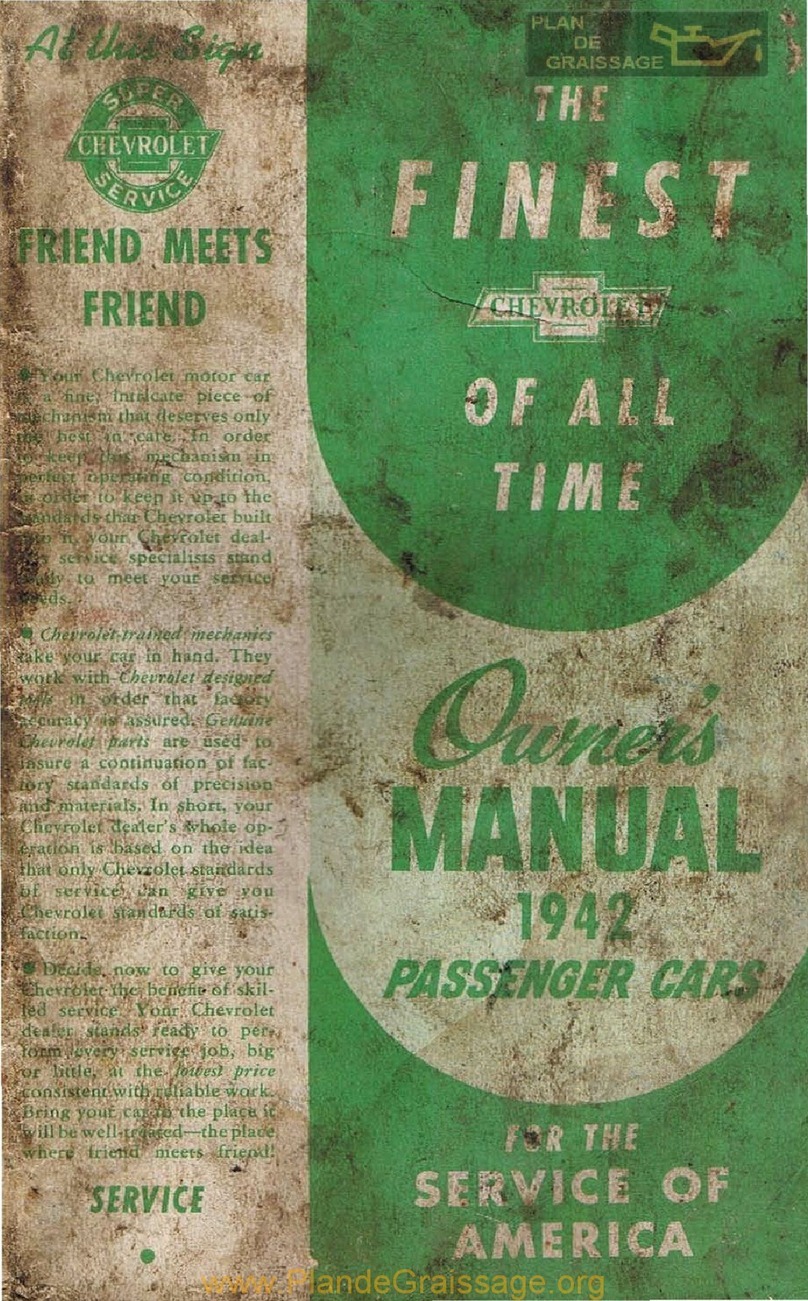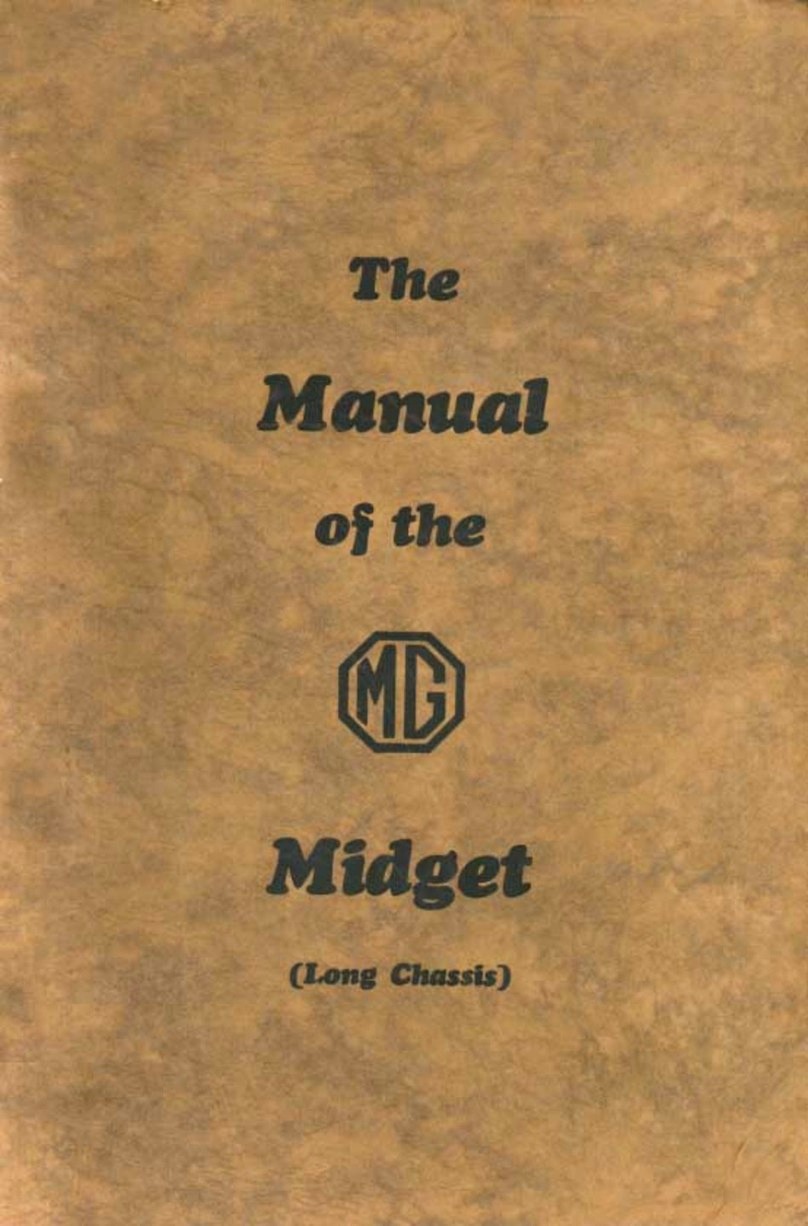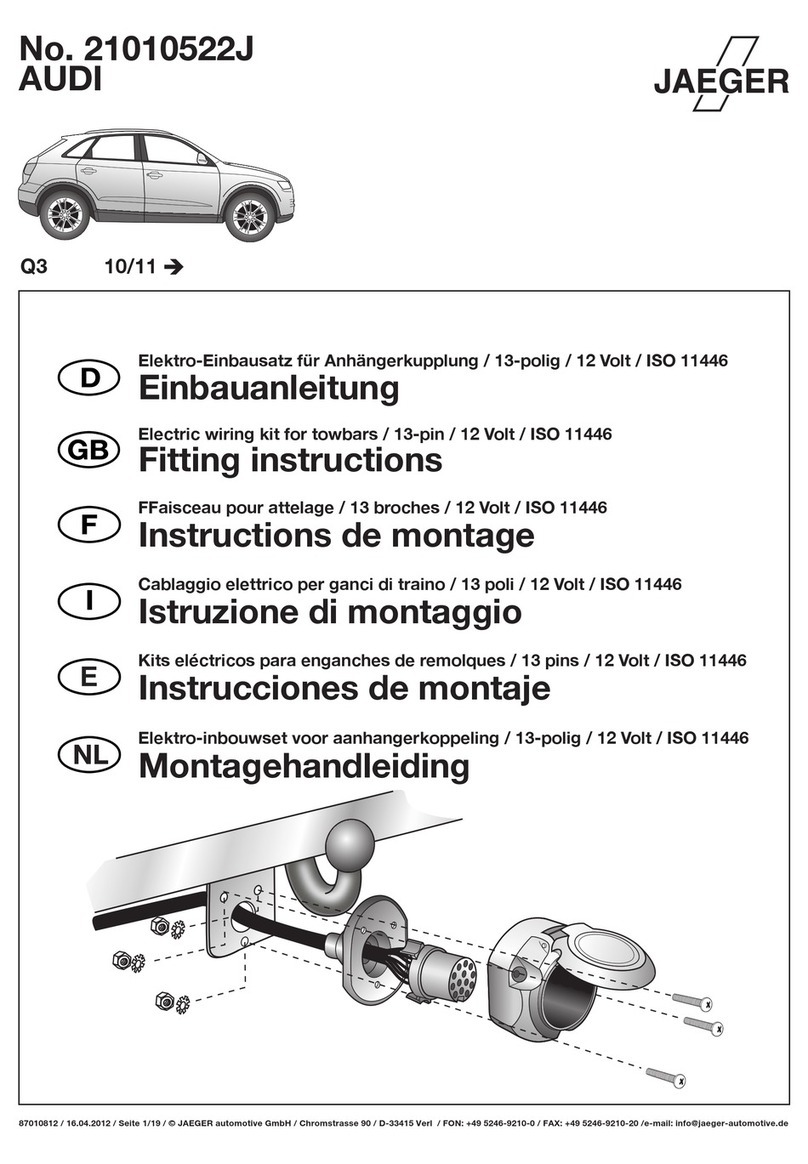GM Chevrolet 1953 User manual

• •
\
\.
www.PlandeGraissage.org

~
~
'.
WELCOME
to
the
l
arge
and
happy
family
of
Chev-
\
C
~
-;.
:-
t
..
j.
rolet
owners!
Your
new
1953
Chevrolet
is
by
far
the
finest
and
~
~
··
..
l~
Si:
'n
eautiful
Chevrolet
ever
built
...
designed
to
: ,
',_
.
~
...
senfe
· .y
ou
faithfully
and
economically
over
many
, ' . ."
thousands
of
miles
.
The
information
and
suggestions
in
this
m
anual
can
help
you
enjoy
to
the
fullest
all
'
~
":)
'
the
advantages
of
your
new
car
.
.,.
-
..
\.
We
should
also
like
to
take
this
opportunity
to
,:
~
,
~
~!
~
.
t
ha
n'k
'ou
for
chC?os~ng
<;hevrolet
....
and
to
ass~re
\\
you
0
our
continuIng
Jnterest
In
yo
ur
motoring
pleasure
and
satisfaction.
,
;
(.
Chevrolet
Motor
Division
General
Motors
Corporation
Detroit
2,
Michigan
..
",
www.PlandeGraissage.org

1.
KEY
STARTER
The
key
starter
has
four
pOSitIOns:
LOCK
, OFF,
ON
and
START.
To
operate,
turn
switch
(0
START.
As
soon
as
the
engine
starts,
release
switch,
which
will
return
to
ON
posi-
tion.
The
key
is
required
only
when
turning
to
or
from
LOCK
position.
2. LIGHT CONTROL KNOB
Pull
knob
to
first
position
for
park-
ing.
tail,
license,
and
instrument
panel
lights.
Regulate
lattcr
by
rotating
knob
.
In
second
position,
driving
lights
replace
parking
lights.
Beam
selection
is
by
foot
switch.
Red
warniog
light
on
speedometer
indi.
cates
upper
beam.
3. PARKING
BRAKE
The
parking
brake,
which
operates
independently
of
the
service
brakes,
is
applied
by
pulling
straight
back
on
the
T-handle.
To
release,
simply
turo
the
handle
slightly
and
push
in
to
normal
position.
4.
WIPER
AND
WASHER
The
windshield
wiper
is
regulated
by
turning
knob.
The
Chevrolet
wind.
shield
washer,
an
accessory,
is
oper
.
ated
by
pressing
and
then
releasing
button
in
the
center
of
the
knob.
2
www.PlandeGraissage.org

5.
VENT
KNOB
The
all
weather
ventilating
system
is
controlled
by
two
knobs.
Each
venti-
Jator
is
opened
by
pulling
the
knob
out
to
control
the
flow
of
air.
AI
limes,
it
may
be
advisable
10
shut
oj]
tbe flow oj
air
to
keep
Ollt
offensive
odors or exhaust gases
of
other traffic.
6.
ASH
TRAY
A
tilt
type
ash
tray
is
located
at
the
left
end
of
the
radio
grille
of
all
Bel
Air
and
"Two-Ten"
models.
To
re-
move
the
ash
teay
for
emptying.
de-
press
the
circular
snuffer
at
top
of
tray
.
7.
LIGHTER
The
cigarette
lighter
on
all
Bel
Air
and
"Two-Ten"
models
is
o{>eraced
by
pushing
in.
When
heated
,
it
auto-
matically
clicks
out
for
use
.
8.
GLOVE
COMPARTMENT
The
glove
compartment
may
be
opened
by
the
push
button
on
the
doo:
.
To
lock,
insert
key
and
turn
one
quarter
turn.
Bel
Air
and
"Two-
Ten"
models
have
an
automatic
light
operated
by
the
companment
door.
3
www.PlandeGraissage.org

4
9. INSTRUMENT
CLUSTER
The
attractive
instrument
cluster
is
conveniently
arranged
for
quick,
easy
reading.
Plastic
arrows
serve
as
indi-
cators
when
the
direction
signal,
an
accessory.
is
installed.
10.
TEMPERATURE
GAUGE
This
gauge
shows
engine
coolant
temperature
.
Normally
needle
regis-
ters
near
the
center
except
during
very
hot
weathec
,
when
long,
hard
drives
or
prolonged
idling
may
cause
it
to
register
close
to
the
"H"
mark.
11.
FUEL
GAUGE
The
fuel
jauge
is
operated
elec-
tricallv
an
indicates
the
amount
of
fuel
in'
the
tank
only
when
the
igni-
tion
is
turned
on.
\'(Ihen
the
ignition
is
turned
off,
the
pointer
returns
to
the
empty
mark.
12.
CHARGE INDICATOR
This
gau$e
shows
whether
the
bat-
tery
is
beIng
charged
or
discharged.
The
generator
is
equipped
with
a
regulator
which
controls
the
charge
according
to
battery
requirements.
13. OIL
PRESSURE
GAUGE
The
oil
pressure
gauge
should
always
indicate
pressure
when
the
engine
is
running.
If
no
pressure
is
indicated,
SlOp
engine
immediately
and
have
the
cause
corrected
.
www.PlandeGraissage.org

14.
SPEEDOMETER
The
circular
type
speedometer
regis-
ters
both
speed
and
accumulated
mileage.
A
hood
and
special
edge-
lighting
reduce
reflections
during
night
deiving.
15.
HEATER
CONTROLS
In
a
car
equi
pped
with
the
Chevrolet
Air
Flow
heater,
the
heater
controls
are
installed
to
the
ri$ht
of
the
key
starter,
replacing
the
rIght
hand
vent
control
knob.
16. RADIO
The
radio
dial
and
controls
are
installed
in
the
space
provided
below
the
radio
grille.
Two
radios
are
available.
one
with
manual
tuning.
and
the
other
having
selector
buttons
for
automatic
station
tuning.
17.
CLOCK
An
illuminated
stem
wind
clock
is
located
at
the
right
of
the
instrument
cluster
in
all
Bel
Air
and
"Two-Teo"
models.
The
dock
is
set
by
pulling
out
and
turning
the
stem
Wind
knob
at
the
left
of
the
dial.
5
www.PlandeGraissage.org

FEATURES
1. FOOT FORM PEDAL
Chevrolet
square-shaped
pedals
are
scientifically
designed
for
maximum
comfort
while
providing
the
proper
"feel"
of
clutch
and
brake
control.
2. ACCELERATOR
The
accelerator
pedal
controls
engine
speed,
anc:!
is
designed
to
provide
the
proper
"feel,"
neither
tOO
light
nor
toO
firm,
for
smooth
control.
3.
SEAT
ADJUSTER
The
front
seat
adjuster
is
on
the
left
side
of
the
seat
frame,
and
when
pressed
down
allows
the
seat
to
be
adjusted
forward
or
backward.
6
www.PlandeGraissage.org

4.
DOOR
HINGE
Door
hinges
arc
of
the
concealed
type,
and
require
no
service
other
than
periodic
lubrication
. A
hold
open
device
is
iacorporated
in
each
door
to
facilitate
entering
or
leaving
the
car.
5.
DOOR
VENTIPANES
Front
door
venti
panes
have
a
crank
type
control.
A
latch
at
the
lower
edge
locks
the
venti
pane.
6.
SUN
VISOR
The
sun
visors,
two
on
Bel
Air
and
"Two-Ten"
models
,
one
on
"One-
Fifty"
models.
are
designed
(Q
pro-
vide
a
wide
range
of
positions
to
shU( off
glare
from
the
sun.
7.
REAR
VIEW
MIRROR
The
rear
view
mirror
is
adjustable
to
accommodate
all
driving
positions
,
and
may
be
rotated
one
half
turn
to
provide
a
higher
or
lower
position
.
8.
INTERIOR
LIGHTING
Bel
Air
and
"Two-Ten"
models
fea-
ture
automatic
interior
light
switches
on
both
front
doors
in
addition
to
the
regular
manual
switch
.
The
Con-
vertible
dome
light
operates
onl
y
when
parking
or
head
lamps
are
on.
7
www.PlandeGraissage.org

INFORMATION
GASOLINE
AND
ENGINE OIL
The
efficient
high
compression
Chev-
rolet
engine
is
designed
(0
deliver
its
performance
and
economy
with
"Regular"
grades
of
gasoline
.
Use
of
(he
proper
engine
oil
is
of
great
importance
in
assuring
maximum
performance
and
economy
. See rec-
ommendations
on
pages
2 1
and
22
.
GASOLINE
FILLER
CAP
The
gasoline
filler
cap
is
located
under
the
lid
in
the
left
rear
fender
on
all
,
models
but
the
Station
Wagons.
which
have
ao
exposed
cap.
For
extra
precaution
against
fuel
theft,
a
lock.
lng
cap
is
available
for
all
models
from
your
Dealer.
HOOD
LOCK
The
hood
rel
e
ase
lever
is
under
the
top
grille
bar,
slightly
left
of
cemer.
Lifting
the
lever
releases
first
the
hood
lock
and
then
the
safety
catch.
The
hood
can
now
be
opened.
Spring
loaded
hood
supports
assist
in
rais-
ing
and
holding
the
hood
open.
8
www.PlandeGraissage.org

ENGINE OIL
LEVEL
ROD
The
oil
level
rod,
located
on
the
right
side
of
the
crankcase,
is
marked
"Full"
and
"Add
Oil."
Check
oil
frequently
and
maintain
level
between
these
two
lines
.
Avoid
overfilling.
POWERGLIDE TRANSMISSION
OIL
LEVEL
ROD
The
Powerglide
transmission
oil
level
rod,
on
the
right
side
of
the
engine,
is
marked
"Full"
and
"
Add
1
Qt
."
Check
every
1,
000
miles
with
transmission
in
Neutral,
engine
warm
and
idling.
Avoid
overfilling.
RADIATOR
FILLER
CAP
A
pressure
type
radiator
filler
cap
reduces
coolant
loss.
When
removing,
rotate
left
to
first
stop
to
relieve
pressure
in
system.
Turn
cap
agam
to
remove.
KEYS
AND
LOCKS
A
single
key
operates
any
lock
on
your
car.
Record
key
number
upon
delivery
of
car.
To
lock
the
doors
from
inside,
push
down
locking
button
on
each
door.
From
outside,
doors
may
be
locked
in
either
of
two
ways:
1.
Push
inside
locking
button
down
and
dose
door
while
holding
in
push
button
on
outside
handle
. 2.
With
door
closed,
turn
front
door
lock
a
quarter
turn
toward
rear
of
car.
Return
key
to
vertical
position
and
remove.
A
special
safety
feature
is
provided
in
the
rear
door
locks
of
all
four-door
sedans
for
owners
who
wish
this
feature.
Your
Chevrolet
dealer
will
adjust
these
locks
so
that
the
door
cannot
be
opened
unless
the
inside
locking
button
is
up.
9
www.PlandeGraissage.org

DRIVING
A
new
experience
in
mocoring
pleasur
e
will
be y
ours
the
moment
you
take
the
whee
l
of
your
new
Power~lide
Chev
-
rolet.
The
new
, moce
powerful
high
compression
engine
and
new
automatic
transmission
provide
flashing
perform-
ance,
improved
operating
economy.
and
even
greater
driving
convenience.
THE
POWERGLIDE QUADRANT
Fingertip
control
of
the
Powerglide
transmission
is
provided
by five
different
posit
i
ons:
- p-
PARK
.
Holds
the
car
immovable,
even
on
steep
grades.
- N-
NEUTRAL
Allows
engine
to
be
oper
a
ted
with
car
standing
still.
- D-
DRIVE.
For
aJi
normal
driving
.
Transmis
s
ion
automati
cally
sele
cts
the
range
be$[
suited
(0
every
driving
situation
.
- L-
LOW.
Use
only
when
pulling
through
de
ep
snow
or
sand
,
climbin
g
or
descending
very
steep
hills,
and
for
additional
engine
brakin
g
below
40
M.P.H
.
- R-
REVERSE.
For
backing
up.
Bring
car
to
a
complete
stop
before
selecting
this
position.
STARTING
THE
ENGINE
1.
]n
a
Chevrolet,
you
can
·
start
the
engine
in
either
"P"
or
"N"
position.
Starter
is
inoperative
in
any
other
positi
o
n.
If
engine
is
very
c
old
or
car
is
on
hill,
"
P"
position
is
preferable
.
2.
Press
accelerator
to
floor
once
and
rele
ase.
This
sets
autom
atic
choke
and
fast
idle
accordi
ng
to
temperature
conditions.
3.
Turn
key
starter
to
START
.
Release
as
soon
as
engine
starts.
Key
starter
will
automatically
return
to
ON.
When
starting
a
warm
engine,
hold
accelerator
halfway
down.
Should
engine
flood,
depress
accelerator
fully
to
open
choke
while
starting.
Do
not
pump
accelerator.
10
www.PlandeGraissage.org

NORMAL
DRIVING
WITH
POWERGLIDE
Place
selector
in
"n"
and
press
the
accelerator
for
smoOth,
effortl
e
ss
driving
in
city
or
country.
Powerglide
automatically
selects
the
range
most
suited
to
your
driving
needs.
Starting,
the
car
moves
forward
in
automatic
low
,
changing
to
cruising
range
between
10
and
42
M.P.H.,
depending
on
accelerator
position
. \X'hile
cruising
at
speeds
below
37
M.P
.H .,
Powerglide
will
change
automatically
to
low
range
when
accelerator
is
fully
depressed
for
maximum
acceleration.
At
low
speeds
above
10
M.P .
H.
, t
his
change
may
occur
before
accelerator
is
fully
depressed.
As
the
car
slows
to a
stop,
Powerglide
change
to
low
range
at
9 M.P.H.
in
readiness
for
the
next
start.
"L"
position
should
be
used
when
climbing
very
steep
grades
at
reduced
speed,
or
when
pulling
through
deep
sand
and
;,
now
.
At
speeds
below
40
M.P.H
.
this
range
may
be
used
to
pro-
vide
additional
engine
braking
for
descending
steep
grades
or
slowing
down
on
slippery
pave-
ment.
11
"R"
pOSItiOn
reverses
Power-
glide
for
backi
ng.
Sri
ng
car
to
a
complete
stOp,
raise
control
lever
slightly
and
move
to
"R"
posi-
tion
with
engine
idling.
www.PlandeGraissage.org

FOR
MAXIMUM
PLEASURE
PERF~NCE
FROM
YO
~~
AND
Remember
that
Powerglide
is completely automatic.
Simply
move
the
selector
to
the
desired
position
and
press
accelerator
(0
go
.
Do
not
attern
pt
to
force
a
change
from
low
to
cruising
range
by
releasing
the
accelerator
.
In
wide
open
acceleration,
Powerglide
will
change
from
low
to
cruising
range
at
42
M.P.H.
During
moderate
acceler-
ation,
this
change
may
occur
as
low
as
10
M.P.H
.
Because
Power-
glide
automatically
selects
the
range
best
suited
to
any
driving
condition,
maximum
performance
and
economy
is
assured.
DRIVING
CAUTIONS
A
few
driving
cautions
should
he
observed:
•
Do
not
accelerate
engine
for
over
ten
seconds
in
"0",
"L",
or
"R"
when
car
is
held
with
brakes.
•
When
stopped
on
an
upgrade,
do
not
hold
car
by
accelerating
engine
except
very
briefly.
Use
service
brake.
•
Move
selector
to
"L"
for
extremely
hard
pulls
at
low
road
speed.
•
Do
not
move
selector
from
"D"
to
"L"
or
"L"
to
"D"
over
40
M.P.H.
•
Never
move
selector
to
"R"
when
car
is
moving
forward.
•
Engage
parking
lock
("P")
only
when
car
is
completely
stopped.
•
If
car
must
be
towed,
place
selector
in
"N."
Do
not
exceed
45
M.P.H
.
Tow
with
rear
wheels
raised
if
transmission
is
not
operating
properly.
PUSH
START
Should
it
ever
be
necessary
to
start
the
engine
by
pushing
car,
place
selector
in
"N"
until
car
reaches
15
M.P.H
.,
or
20
M.
P.H.
on
a
slippery
road.
Turn
key
starter
to
ON
and
move
selector
to
"L."
When
engine
starts,
move
selector
to
"D."
NOTE:
Towing is
110t
recommended Jor this operatiou, as car may
accelerate imo tow car when
c11gine
starts.
1?
www.PlandeGraissage.org

DRIVING
Chevrole
t
's
exclusive
combination
of
easy.shifting
Synchro.
Mesh
transmission
and
light
action
diaphragm
spring
clutch
provides
greater
motoring
pleasure
for
those
who
prefer
conventional
driving.
A
host
of
new
mechanical
features
assure
even
greater
operating
economy,
depend-
ability,
and
convenience.
STARTING
THE
ENGINE
1.
Place
shift
levee
in
Neutral
and
depress
clutch.
2.
Press
accelerator
to
floor
once
and
release
.
This
sets
auto-
matic
choke
and
fast
idle
according
to
temperature
conditions.
3.
Turn
key
starter
to
START.
Release
as
soon
as
engine
starts.
Key
starter
wiLl
automatically
return
to
ON.
When
starting
a
warm
engine,
hold
accelerator
halfway
down.
Should
engine
flood,
depress
accelerator
fully
to
open
choke
while
starting.
Do
not
pump
accelerator.
THE
CHEVROLET
SYNCHRO-MESH
TRANSMISSION
Any
of
the
three
forward
speeds
or
reverse
may
be
selected
from
the
neutral
position
as
follows
:
PUSH
START
FIRST
SPEED
Depress
clutch.
Raise
shift
lever
and
move
fully
down.
Engage
clutch
gradually.
SECOND
SPEED
Depress
clutch.
Push
shift
lever
up
and
away
from
steering
wheel.
Engage
clutch.
THIRD
SPEED
Depress
dutch.
Pull
shift
lever
down
and
away
from
steering
wheel.
Engage
dutch.
REVERSE
With
car
at
a
standstill,
depress
clucch.
Raise
shift
lever
and
push
fully
upward.
Engage
clutch
gradually.
Should
it
ever
be
necessary
to
start
the
engine
by
pushing
or
towing
car,
place
lever
in
Neutral
until
car
reaches
15
M.P.H.
Depress
clutch,
tuen
key
narter
to
ON,
and
place
shif
t
lever
in
THIRD
speed.
Engage
clutch
gradually
to
start
engine
.
13
www.PlandeGraissage.org

•
-~
PERIOD
To
MAINTAIN
the
high
stand-
ard
of
performance
and
efficiency
of
your
new
Chevrolet,
special
attention
should
be
given
for
the
first
two
thousand
miles
to
lubri-
cation
and
the
speed
at
which
the
car
is
driven.
The
crankcase
of
the
engine
is filled
with
a
light
body
"breaking-in"
oil.
USE
THIS
OIL
ONLY
DURING
THE
FIRST
500
MILES
OF
DRIVING.
Ch
eck the oilfrequently
dllrillg
/be
first 500 miles.
At
the
end
oj
500
miles,
drain
the craukcase
while
hot arid refill
with
the grade oj oil
recom11lellded
011
page
21.
Check
oille
'llel each
time
gas
;S
pllrchased
and
change
at
recommended
draill
periods.
To
properly
break-in
the
moving
parts
of
the
engine
do
not
drive
faster
than:
40
miles
per
hour
for
the
first
100
miles
SO
miles
per
hour
for
the
next
200
miles
60
miles
per
hour
for
the
next
200
miles
Remember, carhon
m0110xide
is a poisonous gas.
Never start or run the engine
in
a closed garage.
14
www.PlandeGraissage.org

USE
OF
THE
JACK
•
Set
parking
brake,
and
block
diagonall
y
opposite
wheel.
•
Place
jack
on
ground
under
bumper
as
illustrated
.
•
With
handle
in
place
and
lever
in
UP
position,
raise
car
until
tire
dears
ground.
•
To
lower
,
place
l
ever
in
DOWN
position.
REAR
WHEEL
SHIELD
To
remove
shield,
raise
lever
enough
to
clear
flange
and
pull
straight
down.
To
in~tallJ
place
handle
straight
down
and
engage
lug
at
lower
rear
corner.
Position
shield
and
move
handle
up
and
in,
locking
it
behind
flange.
COOLING
SYSTEM
CARE
Cooling
system
shou
ld
be
kept
clean.
Use
only
rust-inhibiting
anti-freeze
solutions,
following
the
manufacturer's
specification.
To
drain
the
cooling
system
com-
pletely
,
open
drains
on
radiator
and
lower
left
rear
side
of
engine
block
as
illustrated.
Before
installing
anti.freeze
solu·
tion
,
the
cooling
system
should
be
inspected
and
serviced
for
winter
operation.
The
system
shou
ld
be
thoroughly
cleaned,
checked
for
leaks,
and
the
cylinder
head
bolts
properly
tightened
.
After
the
anti.
freeze
solution
has
been
installed,
the
entire
system
should
be
in.
spected
regula
ely
to
insure
that
th
ere
are
no
leaks.
15
www.PlandeGraissage.org

TO KEEP
YOUR
NEW
CHEVROLET
LOOKING
NEW
To
preserve
{he
original
beauty
of
the
Chevrolet
finish,
keep
it
as
clean
as
possible.
When
washing
the
car,
always
use
clear
,
cold
water.
Never
wash
in
the
direct
rays
of
the
sun.
Maintain
the
origina
l
gloss
hy
application
of
a
mild
liquid
polish.
Abrasive
polishes
and
cleaners
may
do
the
job
quicker,
but
may
also
remove
some
of
the
good
finish.
All
chrome
parts
can
best
be
maintained
by
frequent
'
washing
and
occasional
waxing.
Since
a
protective
clear
finish
has
been
baked
on
chrome
parts,
abrasives
or
strong
cleaning
agents
are
harmful.
Therefore,
scouring
methods
of
chrome
cleaning
MUST
BE
AVOIDED
.
Repairs
to
scratches
or
abrasion
:=
that
occur
on
parts
having
this
protective
coating
must
be
performed
within
a
reasonably
short
time
to
prevent
further
deteriorarion
oethl'
finish.
It
is reCOm-
mended
that
repairs
be
made
only
by
those
who
are
familiar
with
the
proper
procedures
and
who
use
approved
refinishing
materials.
CONVERTIBLE TOP
AND
REAR
WINDOW
Before
operating
the
folding
top,
be
sure
to
read
the
convertible
[OP
instructions
booklet,
which
also
includes
hints
on
the
care
of
the
top
fabric
and
plastic
rear
window.
16
www.PlandeGraissage.org

Runs
Hot
Loosens
Cords
Uneven
Wear
Blowouts
Good
Ride
Good
Traction
Even
Wear
More
Mileage
Hard
Ride
Poor
Traction
Bruises
Fabric
Breaks
Enjoy
maximum
service
from
your
tires-maintain
these
recom-
mended
pressures:
Starting
Plessure-24
lbs.
when
car
has
been
standing
three
hours
or
driven
less
than
a
mile
.
City
Pressure-27
lbs.
after
dri
v
ing
car
three
miles
or
more
below
40
miles
per
hour.
Highway
Pressure
-
29
lbs.
after
driving
car
three
miles
or
more
above
40
miles
per
hour.
NOTE
:
The
Eight-Passenger
Station
Wagon
requires
other
tire
pressures.
See
Page
30.
Hard
driving
normally
increases
tire
pressures.
Do
not
"
bleed"
tires
to
reduce
this
higher
pressure
.
VALVE
CAPS
Valve
caps
should
always
be
installed
and
tightened
firmly
to
prevent
dust
and
water
entering
and
damaging
valve
seats.
The
caps
also
act
as
an
air
seal.
CHANGE
TIRES
AS
SHOWN
IN
DIAGRAM
EVERY
5000
MILES
This
helps
prevent
uneven
front
tires
and
distributes
wear
over
all
five
tires.
17
www.PlandeGraissage.org

CHEVROLE
~
Two
ceJ,dios
are
available,
one
with
five
push
buttons
Jor
automatic
tuning
of
pre-selected
stations
and
the
other
having
manual
control
only
.
Location
of
the
manual
set
control
knobs
is
opposite
to
that
of
the
push
button
con
-
trol
model
described
below.
SWITCH
AND VOLUME
CONTROL
Rotate
left
knob
clockwise
to
turn
on
radio
and
control
volume.
TUNING
CONTROL
KNOB
Turn
right
knob
for
manual
tuning
of
any
station.
TONE
CONTROL
Rotate
eared
knob
behind
volume
control
[0
provide
the
desired
tonal
quality.
JJJJJJ]JJJJJJJ111
UJJJJJJJ
55
70
901120
140
16
'0
EIEIt=IEIE
PUSH
BUTTON
TUNING
Automatic
tuning
is
accomplished
by
pushing
the
desired
button.
Stations
may
be
pre-selected
by
this
procedure:
A.
Warm
up
radio
at
least
ten
minutes. In
sub-zero
weather
allow
thirty
minutes
or
more
.
B.
Choose
five
stations
and
arrange
so
that
the
lowest
·
frequency
will
be
selected
by
the
left
push
button.
C.
Move
button
slightly
to
the
right
and
pull
out
approxi-
mately
one
-
half
inch.
18
D.
With
manual
control
knob.
tune
desired
station
to
best
reception.
E.
Firmly
push
button
in
to
the
full
extent
of
its
travel.
F.
Repeat
procedure
for
remain-
ing
buttons
or
to
change
sta-
tiODS
at
any
time.
www.PlandeGraissage.org

AUTOMATIC
The
Chevrolet
Air
Flow
Heater
provides
all-year
comfort
re~a;d
less
of
weather.
]n
winter,
the
desired
temperature
is
automaucally
maintained,
using
either
outside
or
inside
air.
In
sum-
mer,
maximum
ventilation
is
as-
sured
by
large.
un-
restricted
air
inlets.
HEATING
"Temp"
Knob-
Move
to
position
that
maintains
de-
sired
car
temper-
ature.
"Blower-Air"
Knoh-Move
to
"Outside
Air."
Use
"Inside
Air"
in
congested
traffic.
In
either
location,
blower
automatically
starts,
and
may
be
regulated
or
stopped
by
turning
upper
portion
of
knob.
DEFROSTING
"DeC"
Knob
-
With
heater
oper-
ating,
move
"DeC'
knob
to
right
JUSt
enough
to
keep
windshield
clear.
SUMMER
VENTILATION
"Blower-Air"
Knoh-Move
to
"Summer
Vent"
position.
Be
sure
"Temp"
knob
is
at
extreme
left.
19
--
www.PlandeGraissage.org
Table of contents
Other GM Automobile manuals
Popular Automobile manuals by other brands
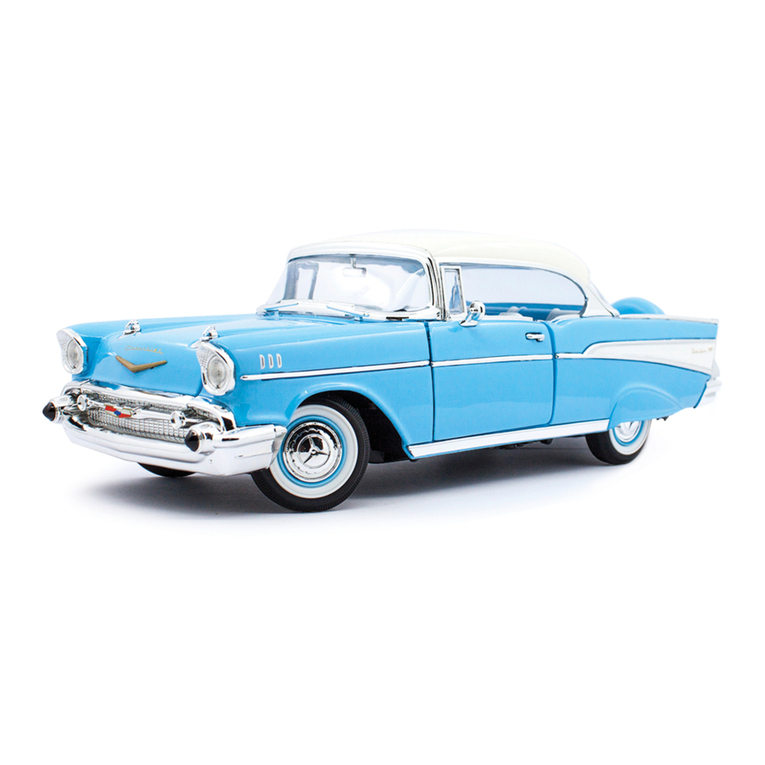
Chevrolet
Chevrolet CHEVY-1957 - ASSEMBLY Assembly manual
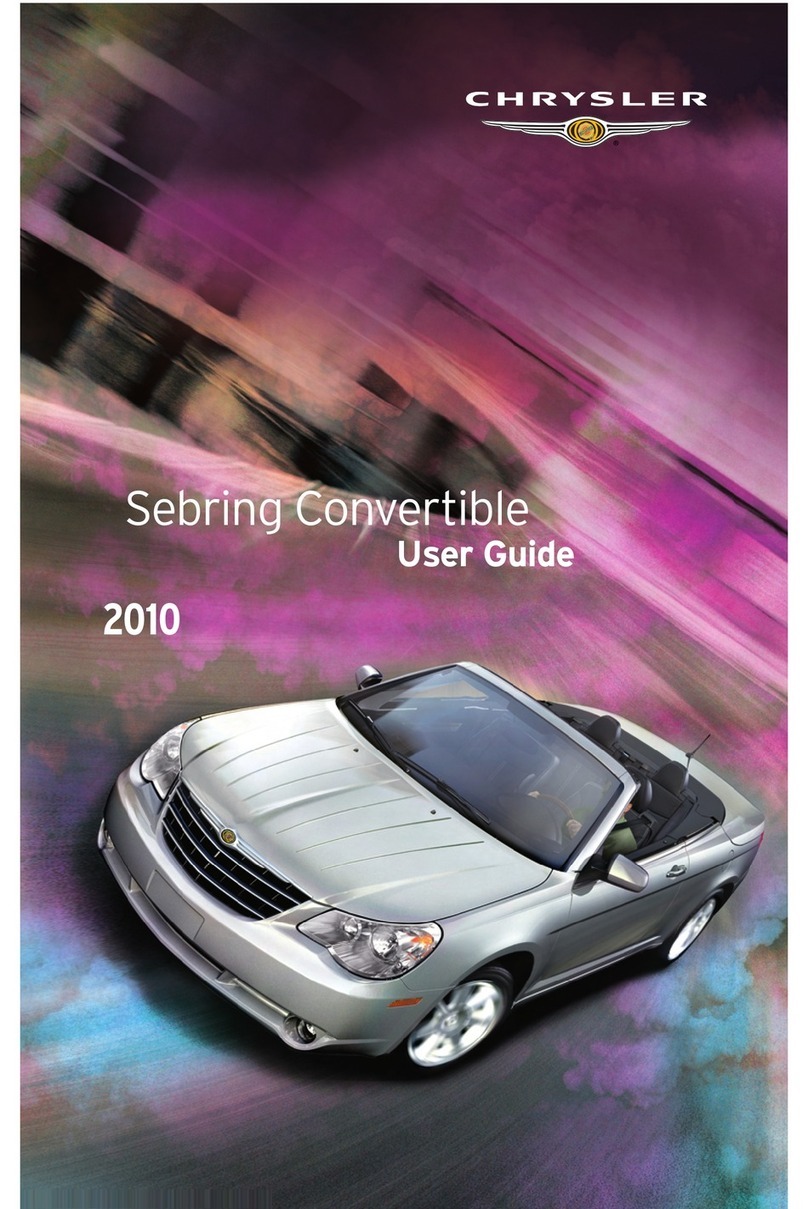
Chrysler
Chrysler Sebring Convertible 2010 user guide
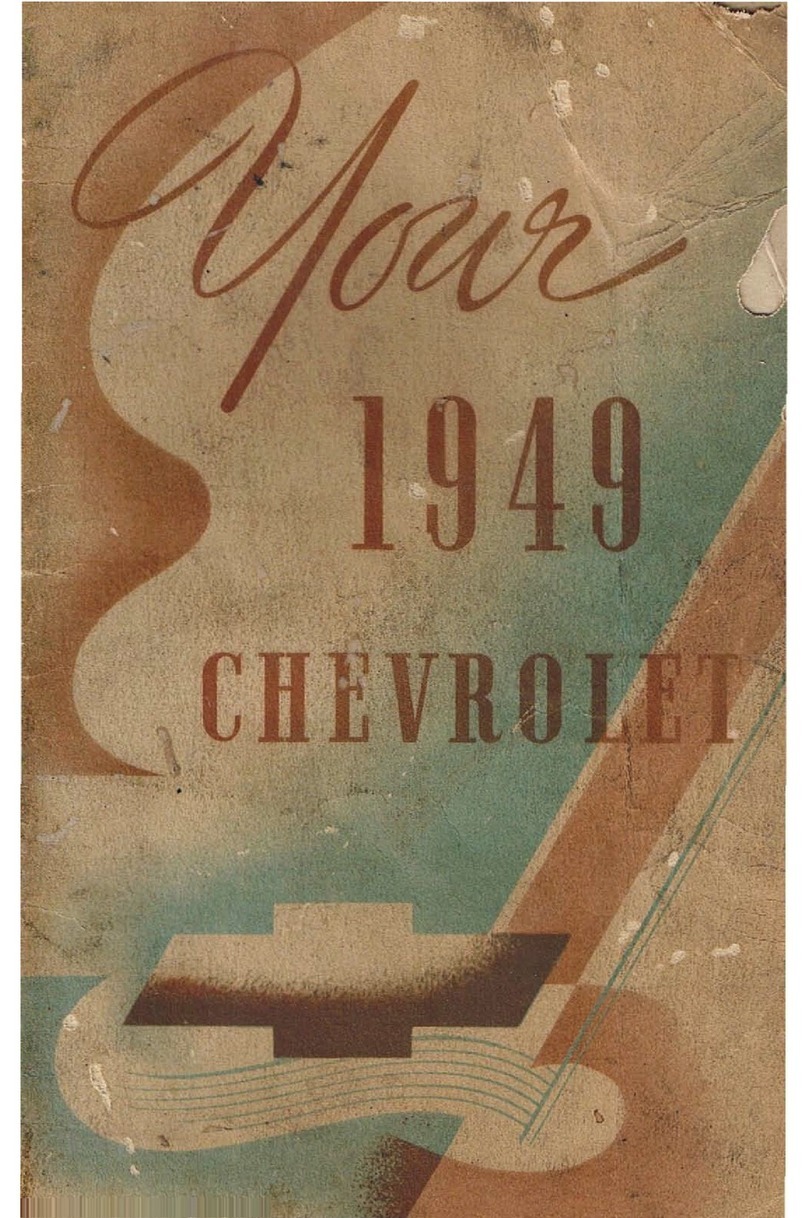
Chevrolet
Chevrolet 1949 Automobile owner's manual
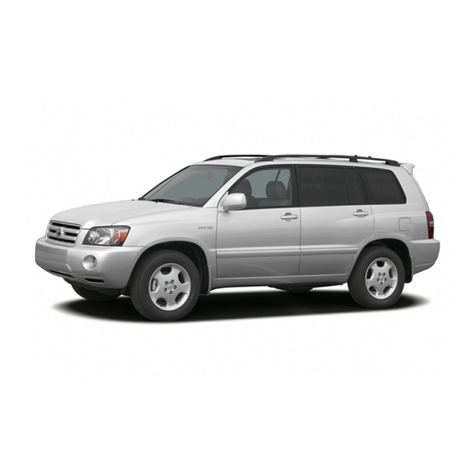
Toyota
Toyota 2007 Highlander Pocket reference guide
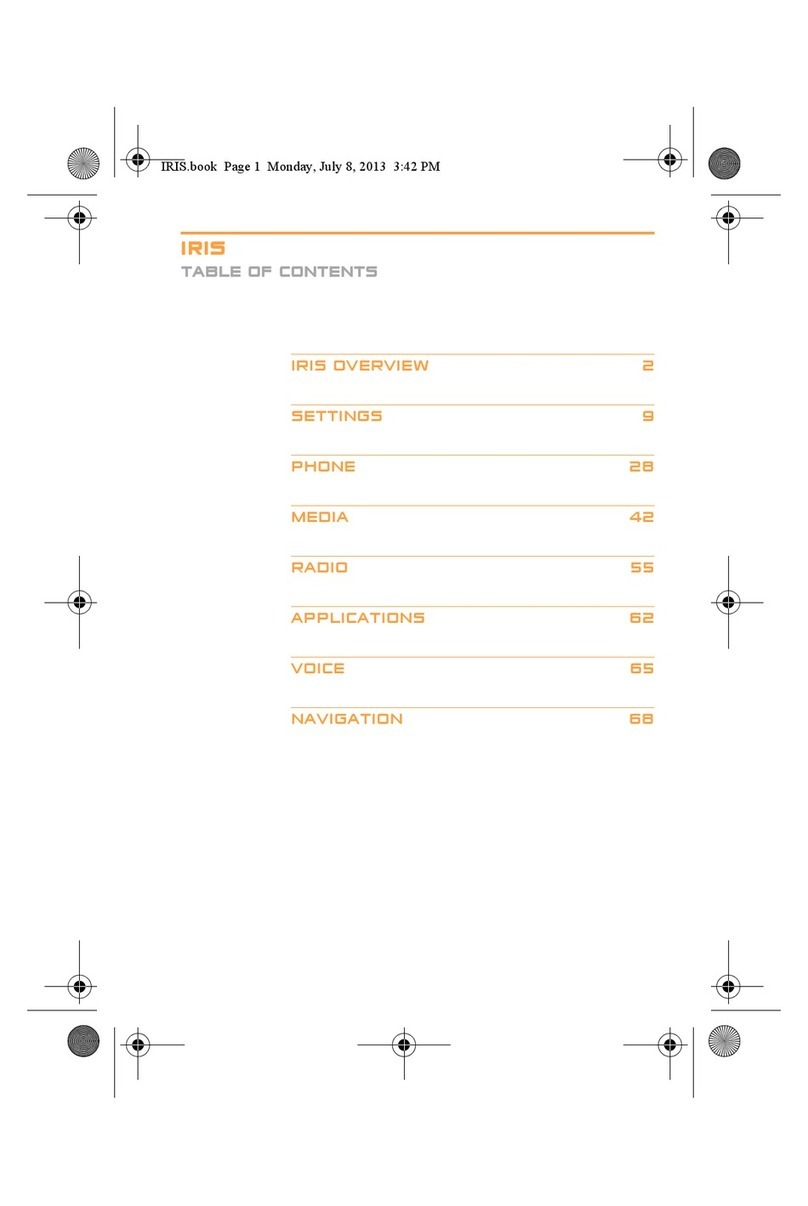
McLaren
McLaren IRIS user manual

Mercedes-Benz
Mercedes-Benz 450 SEL 6.9 Hydraulic suspension trouble shooting
